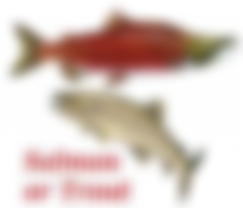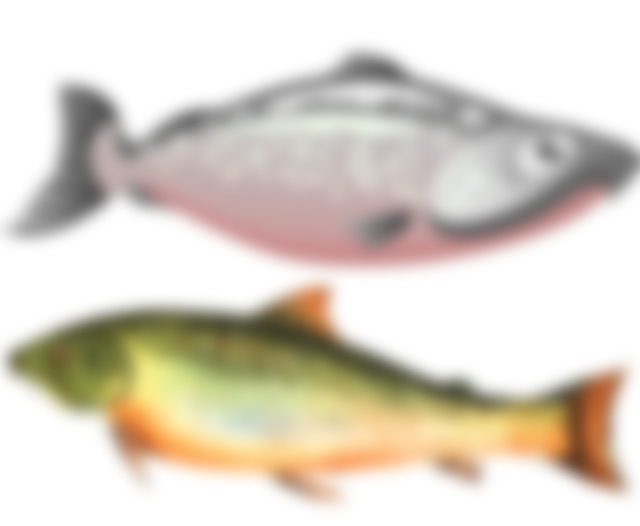Seafood is included in the diets of people all around the world because of its nutritional value. Everyone will probably agree that trout and salmon are both highly valued food. Either that or the fishmonger at the local grocery store is charging a fortune for cheap goods. Just kidding. Love my local grocery store. There’s always lots of fresh quality foods and the free samples offered at the Cooking Connection and at other stations in the store are delish! Though we may agree that the price we pay is reasonable, we may not agree on the real value of this seafood.

Do we know how these type of fish contribute to the human diet, nutrition and well being?
Seafood is not my specialty so bear in mind that the information below is not being supplied by an expert. It’s just tidbits gleaned from a little bit of research. OK. Here we go!
Trout versus Salmon. A few quick facts.
May the best fish win!
Quick Nutrition Facts About Trout
“Trout is one of the healthiest fish you can include in your diet, says Monterey Bay Aquarium’s Seafood Watch. Farmed trout, especially farmed rainbow trout, is a better choice than wild lake trout since farmed trout are raised in freshwater ponds and raceways that are protected from environmental contaminants.” (Source Number 11)
Per professor Paul Addis, University of Minnesota Department of Food Science and Nutrition, lake trouts are known to be the most beneficial sources of omega-3 fatty acids and niacin. A 98 gram serving of trout provides 40% of our daily protein requirement and the RDA or Recommended Dietary Allowance for humans is 0.8 grams of protein per kilogram of body weight (assuming the person is not overweight). Regards fat content: The average lake trout has 6 grams of total fat: 1.4 grams of saturated fat, and 60 milligrams of cholesterol in each 3-ounce serving.
Quick Nutrition Facts About Salmon
“The term “salmon” refers to a variety of species that are all “anadromous” fish, which means they are born in freshwater rivers and streams, migrate to the ocean to mature and spend much of their adult life, and then return to the streams and rivers in which they were born to spawn (reproduce) and then die. Six types of salmon are consumed in the United States including Atlantic, Chinook, Chum, Coho, Pink, and Sockeye Salmon. Of these, five species (Chinook, Chum, Coho, Pink, and Sockeye) are harvested from wild fisheries in the Pacific Ocean and one type, Atlantic salmon, is primarily farmed raised.” (Source: Making Smart Choices | SEAFOOD HEALTH FACTS ~ Archived content.)
Similar to lake trout, salmon from a lake (or river) is also a tremendous source of omega-3 fatty acids. However, salmon provides more total fat and less cholesterol in a 3-ounce serving. A 100 gram serving of consists of 231 calories, 25 grams of protein, 85 milligrams of cholesterol, and 3.2 grams of saturated fat. A 3-ounce serving consists of 10.5 grams of total fat and 54 milligrams of cholesterol.
Conclusion of the Comparison

Trout is more nutritional than salmon, in terms of total fat content and saturated fat content.
But salmon consists of vitamin D which is the very vitamin trout lacks.
Eat trout for your B vitamins and salmon for your D vitamin.
In other words, neither one is better than the other. Me personally? I like the taste of trout better than salmon. But if you invited me to your place for lunch or dinner and served salmon, it would be gladly received with thanksgiving. As long as my seat isn’t next to the bear.
♦ ♦ ♦ ♦ ♦ ♦
Additional Sources:
How much protein do you need every day? | Harvard Health Publications
What Type of Salmon Is the Healthiest to Eat? | Livestrong.com
♦ ♦ ♦
Thanks for reading.
More Read.Cash articles in My Foodie Luv series


Gosh. Choices, choices. You make it tough because I love both. But I tend to eat salmon more often than trout simply because it is more readily available. But I love them both. If I HAVE to choose, I am going to pick salmon.